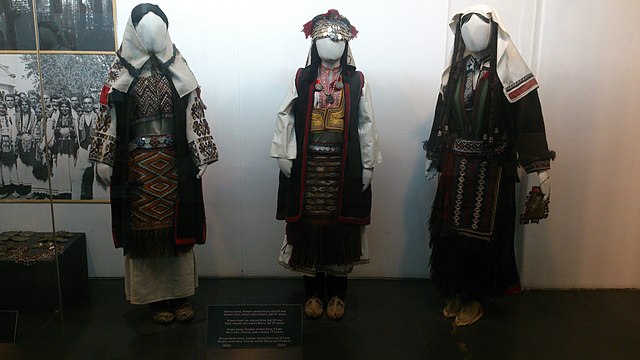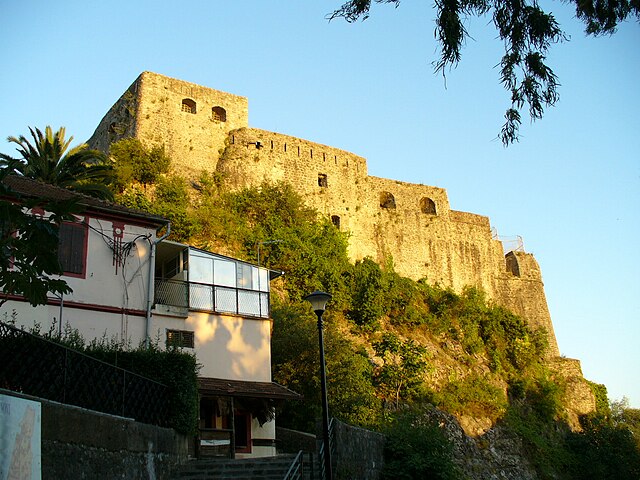East Herzegovina is the eastern part of the historical Herzegovina region in Bosnia and Herzegovina, east of the Neretva river, part of the Republika Srpska entity. Major towns are Trebinje, Nevesinje and Bileća, predominantly inhabited by ethnic Serbs. West Herzegovina is the western part, west of the Neretva river, and is today administratively part of the Herzegovina-Neretva Canton and West Herzegovina Canton, predominantly inhabited by ethnic Croats, located in the Federation of B&H entity. The easternmost parts of historical Herzegovina lie in Montenegro, in so-called "Old Herzegovina", which became part of the Principality of Montenegro in 1878. In 1991, local ethnic Serbs of the region declared the territory of SAO East Herzegovina independent and joined other Serb territories into Republika Srpska by 1992. The meso-region has since been named Trebinje Region.
Trebinje, on the banks of the Trebišnjica
Duži Monastery
Serbian traditional clothing from Gacko
Herzegovina is the southern and smaller of two main geographical regions of Bosnia and Herzegovina, the other being Bosnia. It has never had strictly defined geographical, cultural or historical borders, nor has it ever been defined as an administrative whole in the geopolitical and economic subdivision of Bosnia and Herzegovina.
Town of Novi, founded by the King Tvrtko I, today Herceg Novi, was winter residence of Kosača
Refugees from the Herzegovina Uprising by Uroš Predić
Herzegovina in spring at Ivan Sedlo, mountain pass between Ivan and Bjelašnica mountains.
Western slopes of Čvrsnica, as seen from the Blidinje Plateau.







